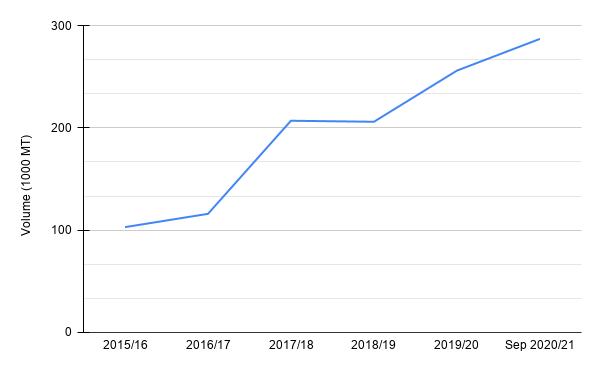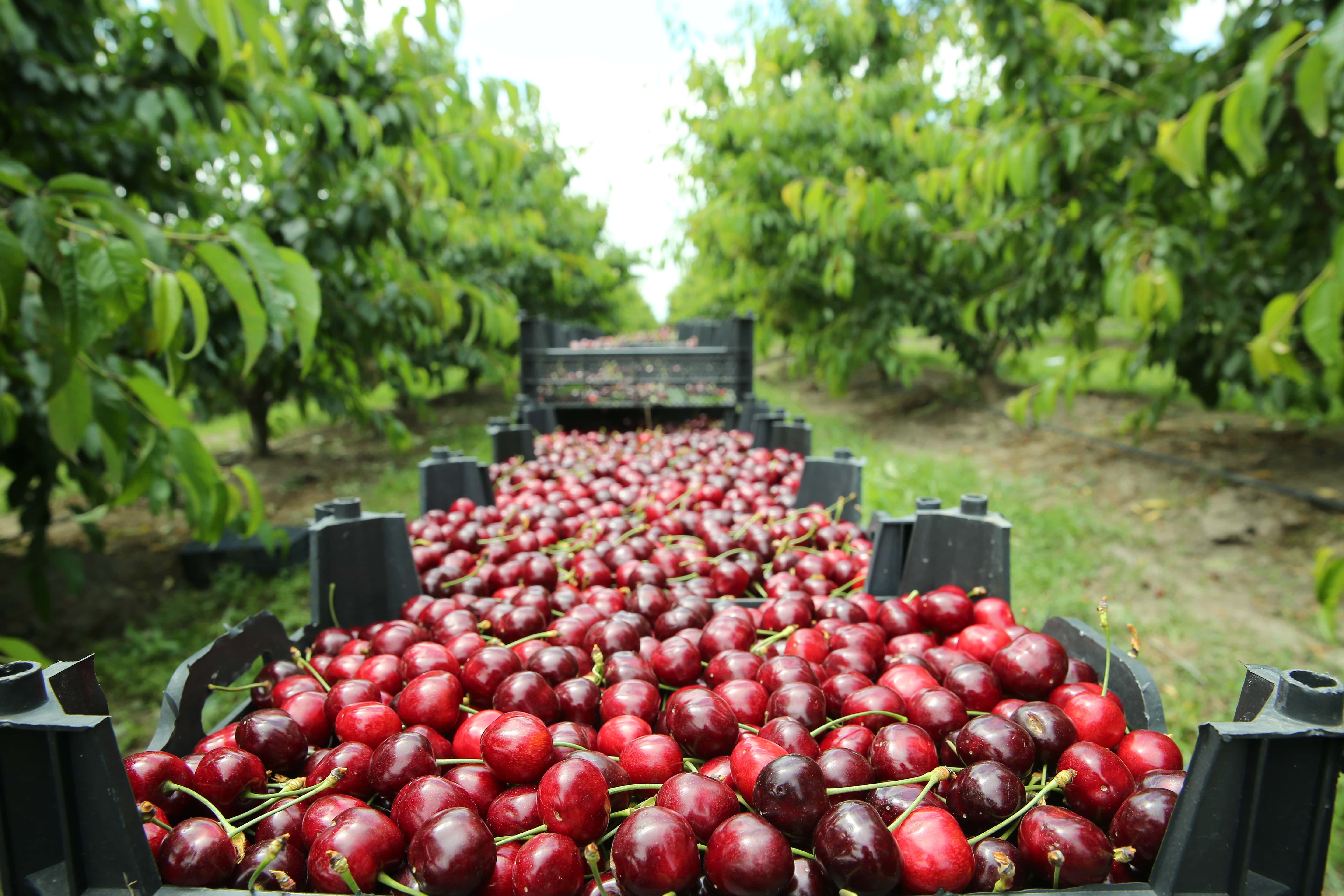Chilean Cherries Booming
The Chilean cherry market is expected to exceed the previous marketing year in terms of all aspects: production and export, even throughout the pandemic. According to the USDA FAS, production is expected to increase by 12.1% for MY 2020/21 compared to the previous year, reaching 280K MT. Exports will experience a similar increase, with a 13% increase for MY 2020/21, continuing the positive streak for Chilean cherry exports.
Chilean Cherry Production Skyrockets
Chilean cherries have seen no setbacks, as production has been bountiful with the help of good weather conditions. Planting for cherries has been on an upswing as well, increasing by 10% annually. On the background of increased planting areas and high productivity, Chilean cherry production is expected to reach 345K MT by MY 2023/24.
Chilean Cherry Production Growing

Source: USDA
Export on the Incline for China
With the outbreak of the coronavirus, many of the agricultural products directed for the Chinese market took a massive hit due to labor shortages and logistical complications. For the Chilean cherry market, where 90% of its export share is sent to China, there was a great risk for the pandemic to be catastrophic for the industry. In February, there were some cherry shipments that were in limbo, unable to be shipped or unloaded, but the shipments were then freed to enter the Chinese market. Chilean cherry exports to China managed to increase by 31.62% for MY 2019/20 from MY 2018/19, a huge jump from MY 2017/18 to MY 2018/19 where exports to China only grew by 0.53%, according to the USDA.

Exports from Central Asia to China during the first seven months of 2020 shrunk considerably, dropping by 44% for Uzbekistan. Uzbek cherries had encountered spring frosts, leading to smaller harvests, and were unable to overcome logistical difficulties. Although much smaller in exports than Chile (88% share in Chinese imports of sweet cherries) Central Asian countries have been able to provide price-competitive cherries, but have faced challenges in limited varieties, advancements in harvest technology, and means of transportation. The decrease in exports from Central Asia gives Chile leverage to establish more share in the Chinese market.
Market Outlook
Having the Chinese market as Chile’s main customer base has been beneficial, but also comes with the dangers of jeopardizing the industry if a catastrophic event, like the pandemic, were to happen, as it causes Chile to rely too much on a single market. Such so that the recent entry of Chilean cherries to the Vietnamese market was welcomed by the industry as it is making way to expand its trade portfolio and increase presence in the Southeast Asian market.
Sources
- Tridge. Insights.
- USDA. Stone Fruit Annual - Cherry.





